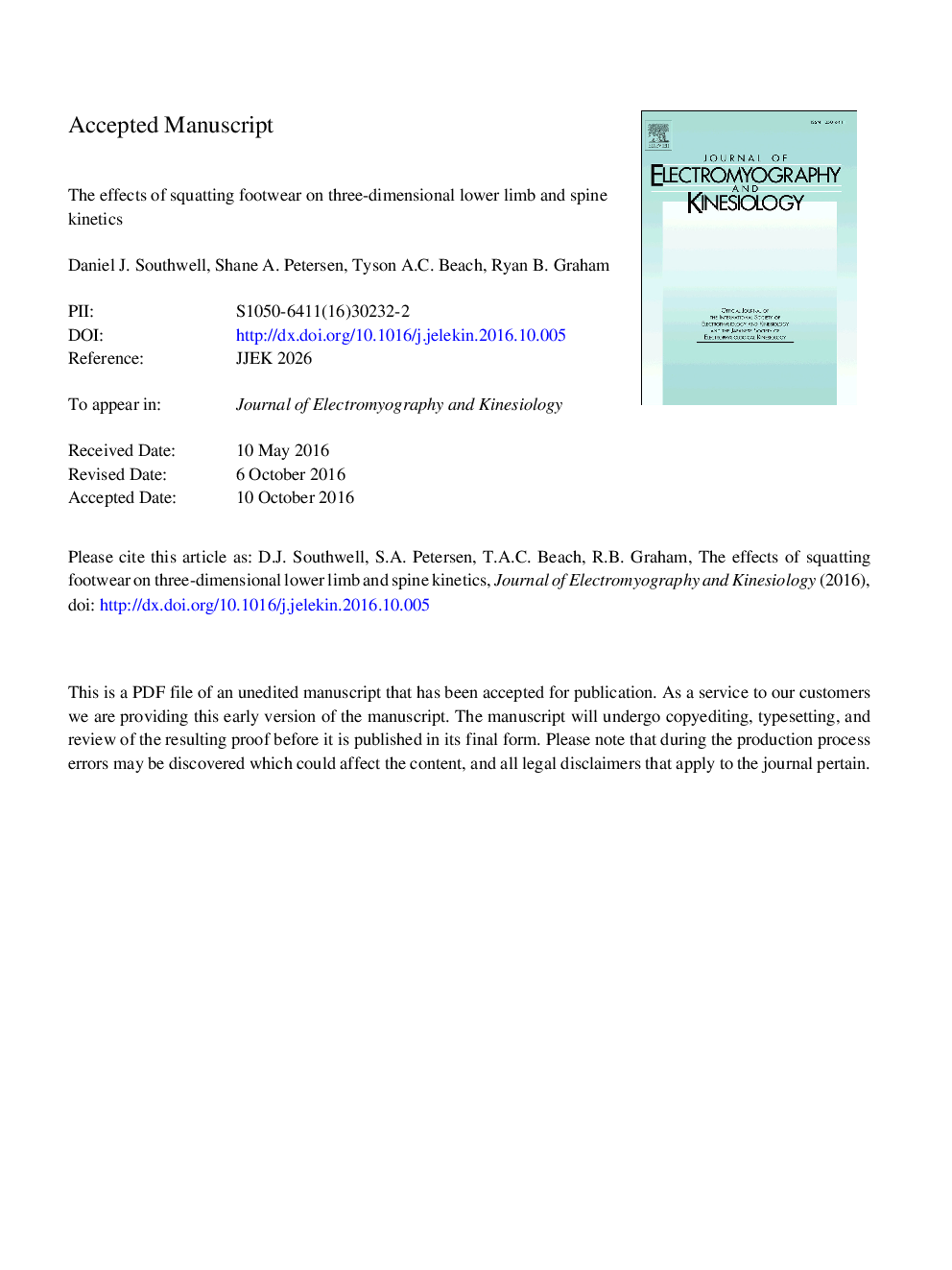| Article ID | Journal | Published Year | Pages | File Type |
|---|---|---|---|---|
| 8799854 | Journal of Electromyography and Kinesiology | 2016 | 28 Pages |
Abstract
Altering footwear worn during performance of the barbell back squat has been shown to change motion patterns, but it is not completely understood how this affects biomechanical loading demands. The primary objective was to compare lower back and extremity net joint moments in 24 experienced weightlifters (12M, 12F) who performed 80% one-repetition maximum back squats under three different footwear conditions (barefoot, running shoes, weightlifting shoes). Results showed that there was a significant main effect of footwear condition on the knee extension moment (p = 0.001), where the running and weightlifting shoes produced significantly larger moments than the barefoot condition. There was also a main effect of footwear condition on knee external rotation moments (p = 0.002), where the weightlifting shoe produced significantly larger moments than both other conditions. At the hip, there was also a main effect of footwear condition on the extension moment (p = 0.004), where the barefoot condition produced significantly larger moments than either the running shoe or weightlifting shoe condition. Lastly, there was also a significant main effect of footwear condition on both hip external (p = 0.005) and internal (p = 0.003) rotation moments, where the barefoot condition produced greater internal rotation and less external rotation moments than either shod condition. This study indicates that altering footwear conditions while performing the barbell back squat may redistribute the internal biomechanical loading patterns amongst the lower extremity joints and perhaps alter the musculoskeletal adaptations elicited.
Related Topics
Health Sciences
Medicine and Dentistry
Orthopedics, Sports Medicine and Rehabilitation
Authors
Daniel J. Southwell, Shane A. Petersen, Tyson A.C. PhD, Ryan B. PhD,
